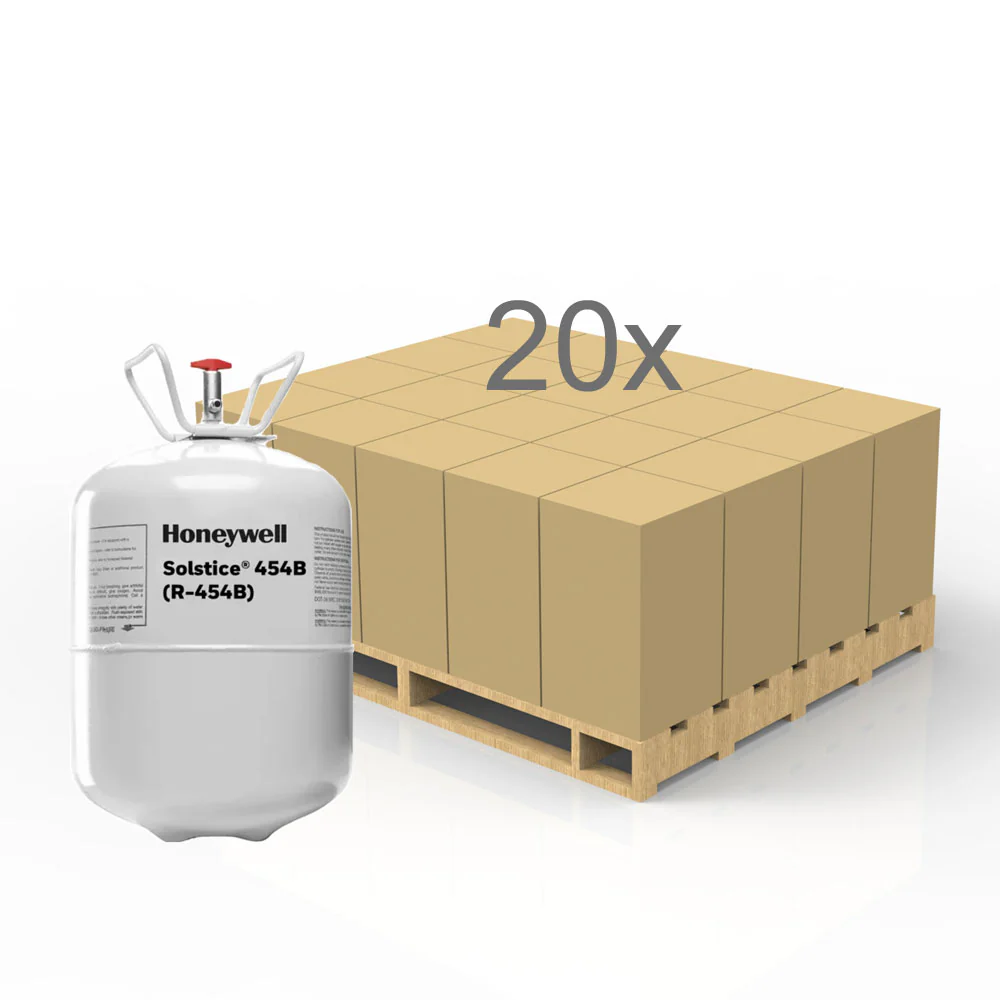
New Environmentally Friendly Refrigerants Paving the Way for Sustainability
If you own an air conditioner or heat pump, you’ve likely heard the term “refrigerant,” but may not fully understand what it is or how it impacts your purchasing decision. Don’t worry – you’re not alone. While the concept of refrigerant can be confusing for homeowners, it’s helpful to have some basic knowledge of it so you’re better prepared for repairing or replacing your HVAC system, especially as the industry transitions to more environmentally friendly options.
The HVAC industry is shifting away from older refrigerants like R-410A to more sustainable choices such as R-454B in 2025 to reduce Global Warming Potential (GWP). While this is great news for the environment, this change may lead to higher costs for some new HVAC systems and questions from homeowners like you.
R-454B: A Promising New Refrigerant
While many of the leading HVAC manufacturers began phasing out R-410A in 2024, all companies are required to manufacture new air conditioning and heat pump systems using R-454B starting on Jan. 1, 2025 to meet industry standards. R-454B is more sustainable with a lower GWP and zero ozone depletion potential (ODP). R-454B is a mix of R-32 and R-1234yf which are more environmentally friendly.
The greener alternative to R-410A features 78% less GWP, which is below the Environmental Protection Agency’s 700 GWP limit for new residential and light commercial air conditioning and heat pump systems, according to the EPA.
Manufacturers also tested R-454B refrigerants in the U.S. Department of Energy’s Cold Climate Heat Pump Challenge, where it showcased exceptional performance and surpassed efficiency requirements.
The Benefits of Switching to R-454B Refrigerant
The main reasons the HVAC industry is switching from R-410A to R-454B include:
- Lower GWP: With a significantly lower GWP, R-454B will reduce the environmental impact of HVAC systems by emitting fewer greenhouse gases, contributing to a slower rate of climate change. These eco-friendly alternatives offer improved cooling and heating efficiency while supporting sustainability efforts.
- Higher Efficiency. R-454B can be up to 5% more efficient than its predecessor, R-410A, in many applications, which lowers energy consumption and home utility costs.
- Regulatory Compliance: R-454B helps future-proof systems as refrigerant regulations tighten globally. New residential and commercial ducted HVAC systems are required to use advanced refrigerants starting in January 2025. HVAC equipment manufactured before 2025 has a one-year grace period and must be installed before Jan. 1, 2026.
- Enhanced Performance: R-454B maintains better performance across a wide range of temperatures, including extreme highs and lows. Many top HVAC manufacturers are developing heat pump systems that can work efficiently in temperatures below zero.
- Compatibility with Existing Systems: R-454B can often replace R-410A without major infrastructure changes, easing retrofits and upgrades.
Will Systems that Use R-454B Cost More?
You may notice higher upfront costs for new HVAC systems in 2025 because of the implementation of R-454B refrigerant.
In addition to the potentially higher cost of the new refrigerant, air conditioners and heat pumps will require updated manufacturing processes and technology to work with more environmentally friendly options, which may raise prices. HVAC technicians will also need specialized training to handle these new refrigerants, potentially increasing both training hours and labor costs. Additionally, installing and maintaining systems that use R-454B may be more expensive due to the need for specialized tools and equipment.
However, while the initial cost may be higher, R-454B offers long-term benefits, including improved energy efficiency and a reduced environmental impact, which can justify the higher price over time.
Systems that use R-410A that were manufactured prior to 2025 can still be installed before 2026, according to the EPA. However, their availability depends on the brand and the region you live in. Ask your local dealer to understand your options.

JK HVAC We install, repair and service all brands of air conditioners! Including air conditioner cleaning, dryer vent cleaning, furnace repair.
📍 Serving all of New York City: Manhattan, Brooklyn, Staten Island, Queens…





